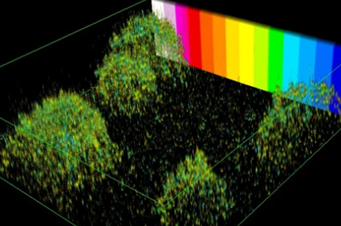Diagnostics, detection and monitoring

We are developing a wide range of sensing and imaging technologies for improved diagnostics, detection and monitoring of clinical signs. These include hospital equipment, ‘smart’ surgical tools, point of care test devices and wearables. Our various techniques work at different scales, from whole body imaging to sensing at a cellular level. We use different contrasts and measure different biomarkers in a wide range of applications - some in vivo and some in vitro. Capabilities include:

We have world leading capabilities at the Sir Peter Mansfield Imaging Centre where scanning technologies and acquisition methods are continually being developed. These are being used to understand physiology and medical conditions and to evaluate treatments.

Measuring a wide range of clinical signs and biomarkers, we can incorporate sensors into critical care monitoring devices, surgical devices and textiles for wearable monitoring. Microscopic and nanoscopic imaging is being developed to see into hard-to-reach places in the body.

Our revolutionary wearable MEG scanner can map the brain with enhanced sensitivity, whilst the patient is moving, and at room temperature. Applications include diagnosis and informing treatment pathways for mental health, epilepsy, dementia, trauma.

Deep tissue optical imaging is being developed using infrared lasers as a non-invasive, cheap, high resolution imaging tool for in vivo diagnostics. Initially for use in handheld devices on hospital wards, ultimately the technique could be scaled to a walk-through scanner.

We are studying biological materials at a nano- and micro-scale, enabling us to look into different regions of individual cells and enable imaging of biological materials in great detail, including during surgery.

Mid-infrared biophotonics, using glass fibres, are being developed for portable, real-time medical sensing and imaging. Applications include in vivo cancer diagnosis, medical endoscopy and dermoscopy, real-time imaging of cancer margins during surgery.

We are harnessing biological mechanisms to develop conductive materials, sensors and actuators, and methods to facilitate the seamless integration of electronics with biology, known as bioelectronics

Label-free imaging of materials, cells and tissues with our 3DOrbiSIMS facility. Applications include biomedical implants, drug delivery systems, antimicrobial resistance, organic electronic devices and engineering applications.

Miniaturized analytical devices measure biological samples inside living cells, in-situ and in real-time. We manufacture nanosensors capable of measuring glucose, oxygen, calcium, zinc and pH

With super-sensitive diamond microscopes, we can study cells and tissues and how they work, to lead to new and effective treatments for different diseases.